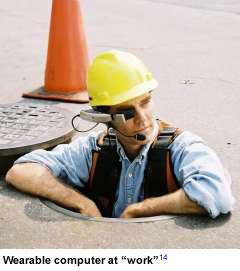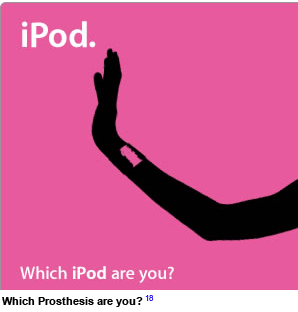ISSN: 1705-6411
Volume 3, Number 2 (July 2006)
Author: Jean Baudrillard
Translated by: James Benedict
Editor’s note: This selection previously appeared as pages 52-60 of Jean Baudrillard. The System of Objects (c 1968, Paris: Editions Gallimard). Translated by James Benedict. New York: Verso, 1996:52-60.
If the simulacrum is so well designed that it becomes an effective organizer of reality then surely it is man, not the simulacrum, who is turned into an abstraction.1
I. Introduction
The stylization of forms is invariably a corollary of the growing autonomy of the functional world and the optimized organization of space in its extension. Forms themselves also become more autonomous as they diverge further and further from a morphology founded on the human body and on the physical effort exerted by that body, yet they continue to allude thereto in one way or another. They organize themselves independently, but their former relationship to primary functions subsists in the abstractness of the sign: this is their connotation. Consider the hand, whose importance for the gestural system of control we have already mentioned.2 The first aim of all modern objects is manipulability (“manipulable” being virtually synonymous with “functional”). But just what is the nature of the “hand” which thus determines the forms of these objects? Certainly no longer the prehensile organ that focuses effort: rather, nothing more than the abstract sign of manipulability, to which buttons, handles, and so on are all the better suited in that the operation concerned no longer calls for manual labour and, indeed, takes place elsewhere. Here we rediscover (though now on the morphological plane) the myth of naturalness3 : the human body delegates no more than the signs of its presence to objects whose functioning, in any case, is independent from now on. At the very most it delegates its “extremities”, while objects, for their part, are “contoured” in accordance with an abstract morphological meaning. There is a collusion of forms here which no longer refers to man save by way of allusion.4 It is in this sense only that the object’s form “weds” the hand, that Airborne’s armchair5 “weds” the shape of your body: one form adapts to another. The traditional object or tool, by contrast, was not in any way “wedded” to human forms; what it wedded was human physical effort and human gestures – indeed, the human body imposed itself upon that tool in order to carry out a material task. Today the human body would seem to be present only as the abstract justification for the finished form of the functional object. Functionality is thus no longer the imposition of a real task, but simply the adaptation of one form to another (as of handle to hand) and the consequent supersession or omission of the actual processes of work.
Thus freed from practical functions and from the human gestural system, forms become purely relative with respect both to one another and to the space to which they lend “rhythm”. This is how we now define the “style” of objects: inasmuch as their mechanism is virtual or taken for granted (a few simple gestures evoke its power without making it manifest, while the effective physical embodiment of the object remains indecipherable), it is only their form which is present – which wraps that mechanism in its perfection and confines it within its contours, cloaking and eliminating an energy that has been made into an abstraction and, as it were, crystallized. As in the development of some animal species, the form is externalized, enclosing the object in a sort of carapace. Fluid, transitive, enveloping, it unifies appearances by transcending the alarming discontinuity of the various mechanisms involved and replacing it with a coherent whole. A functional atmosphere implies a continuous closure of line (also of material – of chrome, enamel or plastic) which restores the unity of a world whose profound equilibrium was formerly guaranteed by human gestures. We are heading towards an absolutism of forms: only the form is called for, only the form is read, and at the deepest level it is the functionality of forms that defines “style”.

Contemporary Functional Electronic Prosthesis 6
II. The End of the Symbolic Dimension
The fact is that this formal achievement papers over an essential lack; our technological civilization tries to use the universal transitivity of form as a means of compensating for the disappearance of the symbolic relationship associated with the traditional gestural system of work, as a way of making up for the unreality, the symbolic void, of our power.7
For gestural mediation is by no means confined to the practical realm, and the energy invested in physical effort is not merely muscular and nervous. Gestures and physical effort are also the vectors of a whole phallic symbolism, as deployed, for example, in such notions as penetration, resistance, moulding or rubbing. The rhythm of the sexual act is the prototype of all rhythmical gestures, and all technological praxis is overdetermined by it.8 Because they press the whole body into the service of effort and accomplishment, traditional objects and tools acquire something of the deep libidinal cathexis of sexual exchange (as, at another level, do dance arid ritual).9 But of course all this is discouraged, demobilized, by the advent of the technical object. Everything once sublimated – and hence cathected symbolically – in the gestural system of work is now repressed. No vestige remains in our technical utilities of the theatrical and anarchic outgrowths of the objects of earlier times, which showed their age, and made no secret of the work they did. Spades and pitchers were living phalluses or vaginas in whose “obscenity” the instinctual dynamics of human beings lay open to a symbolic reading.10 The whole gestural system of work was also obscene, in sharp contrast to the miniaturized and abstract gestural system of control to which it has now been reduced. The world of the objects of old seems like a theatre of cruelty and instinctual drives in comparison with the formal neutrality and prophylactic “whiteness” of our perfect functional objects. Thus the handle of the flatiron gradually diminishes as it undergoes “contouring” the term is typical in its superficiality and abstractness; increasingly it suggests the very absence of gesture, and carried to its logical extreme this handle will no longer be manual – merely manipulable. At that point, the perfecting of the form will have relegated man to a pure contemplation of his power.
III. The Abstractness of Power

Co-pilot/ gunner’s cockpit on the boeing AH-64D Apache Longbow 11
Man’s technical power can thus no longer be mediated, for it has no common measure with the human being and the human body. Nor, by extension, can it any longer be symbolized: functional forms can do no more than connote it. Certainly they overburden it with meaning in their absolute consistency (aerodynamism, manipulability, automaticity etc.), but at the same time they are formal expressions of the void that separates us from our power; in a sense they are the ritual that accompanies the miracle-working of the modern world. They are the signs of our power, then, but also testimony to our irresponsibility with respect to that power. It is here, perhaps, that we should seek the reason for the morose technical satisfaction to which initial euphoria over mechanical achievement has so quickly given way, for the peculiar anxiety that takes hold of all beneficiaries of the wonders of the object, of obligatory non-involvement, and of the passively observed spectacle of their own power. The uselessness of habitual gestures and the breakdown of everyday routines founded on movements of the body have a profound psycho-physiological impact. Indeed, a genuine revolution has taken place on the everyday plane: objects have now become more complex than human behaviour relative to them. Objects are more and more highly differentiated – our gestures less and less so. To put it another way: objects are no longer surrounded b the theatre of gesture in which they used to be simply the various roles; instead their emphatic goal-directedness has very nearly turned them into the actors in a global process in which man is merely the role, or the spectator.
There is a moral to be drawn from the following little tale. We are in the eighteenth century. An illusionist well versed in clockwork has devised an automaton. An automaton so perfect, with movements so fluid and natural, that when the illusionist and his creation appear on the stage together, the audience cannot tell which is which. The illusionist then finds himself obliged to make his own gestures mechanical, and – in what is really the pinnacle of his art – to alter his own appearance slightly so as to give his show its full meaning; the spectators would eventually chafe if they were left in doubt as to which of the two figures was “real”, and the neatest solution is that they should take the man for the machine, and vice versa.
This story provides a good illustration of a familiar fatal relationship to technology even though in the case of modern reality we do not awake to the applause of an audience delighted to have been so thoroughly duped; a good analogy for a society with a technical apparatus so highly perfected that it appears to he a “synthetic” gestural system superior to the traditional system, a sovereign projection of fully realized mental structures. For the time being the human gesture is still alone capable of supplying the precision and flexibility demanded by certain tasks, but there is no reason to assume that the unceasing forward march of techne will not eventually achieve a mimesis which replaces a natural world with an intelligible artificial one. If the simulacrum is so well designed that it becomes an effective organizer of reality then surely it is man, not the simulacrum, who is turned into an abstraction. It was already apparent to Lewis Mumford that “the machine leads to a lapse of function which is but one step away from paralysis”.12 This is no longer a mechanistic hypothesis but reality as directly experienced: the behaviour that technical objects impose is a broken-up sequence of impoverished gestures, of sign-gestures bereft of rhythm. It is rather like what happens to the illusionist of the story who, in response to the perfection of his machine, is led to dismantle and mechanize himself. The coherence of his own structural projection thus relegates man to the inchoate. In the face of the functional object the human being becomes dysfunctional, irrational and subjective: an empty form, open therefore to the mythology of the functional, to projected phantasies stemming from the stupefying efficiency of the outside world.
IV. The Functionalist Myth

Wearable computer at “work” 13
For the concrete dynamic of effort has not disappeared completely into the abstraction of the mechanisms and gestures of control. It has been internalized as the mental dynamic of a functionalist myth: the myth of the possibility of a totally functional world of which every present-day technical object is already a sign. The repressed gestural system is thus transformed into myth, projection, transcendence. No sooner do we lose sight of the route taken by energy, feel energy to be intrinsic to the object, become the non-responsible beneficiaries of an absence (or near-absence) of any need for gesture and physical effort, than we are surely justified in believing – indeed, are obliged to believe – in an absolute and limitless functionality, in efficacy as the virtue of signs. Something is revived here of the ancient habit, prevalent in a world of magic, of inferring reality from signs. “Part of the feeling of the efficacy of primitive magic has survived in the unconditional belief in progress”, writes Gilbert Simondon.14 This applies not only to technological society in a global sense but also – confusedly but tenaciously – to the everyday environment, where the most insignificant of gadgets may he the focal point of a techno-mythological realm of power. The way objects are used in everyday life implies an almost authoritarian set of assumptions about the world. And what the technical object bespeaks, no longer requiring anything more than our formal participation, is a world without effort, an abstract and completely mobile energy, and the total efficacy of sign-gestures.15

“Universal” prosthesis 16

Which Prosthesis are you? 17
V. Functional Form: The Lighter
All this is exemplified in the stylized fluidity of “functional” forms. It is precisely this mental dynamic, this simulacrum of a lost symbolic relationship, that such forms connote in their striving to reinvent a teleology from signs alone. Consider the lighter shaped like a pebble which has been successfully promoted by the advertisers in the last few years. Oblong, elliptical and asymmetrical in form, it is described as “highly functional” not that it is better than any other lighter for lighting cigarettes, but because it is “perfectly shaped to fit into the palm of the hand”. “The sea has polished it to the form of the hand”: it is in a finished state. Its functionality resides not in its ability to light but in its manipulability. It is as though its form was predisposed by nature (the sea) for manipulation. This new teleonomy constitutes the rhetoric of this object. The connotation here is twofold: though it is an industrial product, this lighter is supposed to have retrieved one of the qualities of the craft object in that its form is an extension of the human gesture and the human body; meanwhile, the allusion to the sea takes us into the realm of a mythical nature itself culturalized as a function of man and perfectly adapted to man’s every last desire: the sea plays the cultural role of polisher – an instance of nature’s sublime craftsmanship.18 The action of sea on stone is thus echoed by the hand creating fire; the lighter becomes a miraculous flint, and a prehistoric and craftsmanly purposiveness comes into play in the very practical essence of an industrial object.
Formal Connotation: Tail Fins

Celebrating Tail Fins 19
There was a long period during which American cars were adorned by immense tail fins. For Vance Packard these perfectly symbolized the American obsession with consumer goods.20 They have other meanings, too: scarcely had it emancipated itself from the forms of earlier kinds of vehicles than the automobile-object began connoting nothing more than the result so achieved – that is to say, nothing more than itself as a victorious function. We thus witnessed a veritable triumphalism on the part of the object: the car’s fins became the sign of victory over space – and they were purely a sign, because they bore no direct relationship to that victory (indeed, if anything they ran counter to it, tending as they did to make vehicles both heavier and more cumbersome). Concrete technical mobility was over-signified here as absolute fluidity. Tail fins were a sign not of real speed but of a sublime, measureless speed. They suggested a miraculous automatism, a sort of grace. It was the presence of these fins that in our imagination propelled the car, which, thanks to them, seemed to fly along of its own accord, after the fashion of a higher organism. The engine was the real efficient principle, the fins the imaginary one. Such interplay between the spontaneous and the transcendent efficacy of the object calls immediately for nature symbols: cars sprout fins and are encased in fuselages – features that in other contexts are functional; first they appropriate the characteristics of the aeroplane, which is a model object relative to space, then they proceed to borrow directly from nature – from sharks, birds, and so on.
These days connotations of the natural have shifted to a different register. Formerly we were treated to a flood of motifs from the vegetable kingdom which, as a way of naturalizing them, submerged objects and even machines in signs of the fruits of the earth.21 Now, by contrast, we are seeing the emergence of a systematization based on fluidity that seeks connotations no longer in earth or flora, which are static elements, but instead in air and water, which are fluid ones, as also in the dynamic world of animals. Despite this shift from organic to fluid, however, the modern version of naturalness does still refer to nature: astructural, inessential features such as the tail fin still lend natural connotations to technical objects.
It follows that such connotation is allegorical in character. When a fixed structure is invaded by astructural elements, when the object itself is overwhelmed by a formal detail, the true function is no longer anything but a pretext, and the form does no more than signify the idea of the function. In other words, the form has become allegorical. Tail fins are our modern allegory. We may have no more muses, no more flowers, but we do have fins on our cars and lighters polished by the sea. It is through allegory, moreover, that the discourse of the unconscious makes itself heard. The deep-rooted phantasy of speed finds expression in tail fins, but it does so in an allusive and regressive manner. For while speed has a phallic character, the speed evoked by tail fins is merely formal, fixed, and, as it were, visually edible. Speed so apprehended is no longer the result of an active process but, rather, the result of pleasure taken in speed-in-effigy, so to speak – the final, passive state of an energy completely degraded to the level of a pure sign, to a level where unconscious desire is forever chewing over an arrested discourse.
Thus formal connotation is indeed tantamount to the imposition of a censorship. Behind the functional self-realization of forms, traditional phallic symbolism has fallen apart: on the one hand this system has become abstract, a simulacrum of power (mechanism being concealed or indecipherable); at the same time, regressively and narcissistically, it is content to let itself be enveloped by forms and their “functionality”.

Automobile with “spoiler” 22
About the Author
Jean Baudrillard has been making the world more enigmatic and unintelligible for over three decades. His most recent books are: The Intelligence of Evil Or The Lucidity Pact (New York: Berg, 2005); and (with Enrique Valiente Noailles) Les Exilés du dialogue. Paris: Galilée, 2005 (not yet available in English). He is an Editor of IJBS.
Endnotes
1 – Editor’s note: Ibid:57.
2 – Editor’s note: Ibid.:47-50.
3 – Editor’s note: for more on “the myth of naturalness” see Jean Baudrillard in Ibid: 53, 59-64; and Jean Baudrillard. For A Critique of the Political Economy of the Sign, (c. 1972), St. Louis, Mo: Telos Press, 1981:46 ff.
4 – Just as we saw that in the realm of atmosphere, nature is no more than an allusion. Editor’s note: see Jean Baudrillard. The System of Objects: 30-51.
5 – Editor’s note: see Jean Baudrillard in Ibid:168 ff.; and Jean Baudrillard. The Consumer Society, (c. 1970), London: Sage, 1998:159.
6 – www.lundia.co.uk Editor’s note: All images in this article were added to the text during this reprint.
7 – The last thing I want to do, however, is romanticize either physical labour or the traditional gestural system. When one contemplates the centuries during which man was obliged to make up with his own strength for the shortcomings of his tools, when one recalls that, long after the day of slaves and serfs, peasants and craftsmen continued to manipulate objects unchanged since the Stone Age, one can only applaud the new abstractness of energy sources and the decline of a gestural system which was, alter all, an appurtenance of servitude. The “soulless machinism” of today – down to and including electric potato mashers – is what has made it possible to get beyond the strict equivalence of gesture and product which once used up every moment of every endless day: at long last human gestures can embody a surplus. The consequences on another level, however, are nonetheless very far reaching.
8 – See Gaston Bachelard and Gilbert Durand. Les structures anthropologiques de l’Imaginaire. (Second Edition), Paris: Presses Universitaires de France, 1963.
9 – Similarly, it is arguable that the gestural system also facilitates the integration into objects of what Piaget calls paternal and maternal “affective schemata” – the child’s relationships to its primal human milieu: the father and mother themselves appear to the child as tools surrounded by other, secondary, tools.
10 – Thus the classic maternal house of children’s drawings, with its doors and windows, symbolizes both the child itself (a human face) and the body of the mother. Like the disappearance of the old gestural system, the disappearance of this traditional house, complete with storeys, staircase, attic and cellar, signals first and foremost the frustration of a faculty of symbolic recognition: the modern order disappoints us because it stymies any profound involvement, any visceral perception of our own body; because we can now recognize therein scarcely any aspect of our bodily organs, of our somatic organization.
11 – http://www.janes.com/defence/air_forces/news/jawa/jawa001013_1_p3.jpg
12 – Lewis Mumford. Technics and Civilization (c. 1934). New York: Harcourt Brace, 1963:344.
13 – www.pensystems.com/wearable.html (link no longer active 2019)
14 -Gilbert Simondon. Du mode d’existence des objets techniques. Paris: Aubier, 1958:5.
15 – This mythology must he distinguished from the ideology of Progress, which, abstract as it may be, is still a hypothesis about structures which is based on actual technological development. The functionalist myth, by contrast, is no more than the presumption, taken on faith from the mere testimony of signs, of the existence of a technological totality. The ideology of Progress is a socio-cultural mediation of the eighteenth and nineteenth centuries; the functionalist myth is an anticipatory fantasy.
16 – http://www.apple.co.nz/ipod/ http://yawarakamissile.weblogs.jp/weblog/images/ipod.jpg (link no longer active 2019)
17 – http://www.apple.co.nz/ipod/
18 – Mythologies of the “natural” generally evoke an earlier cultural system as a kind of pseudo-historical reference point in their regression to a mythical totality. Thus the mythology of pre-industrial craftsmanship implies the myth of a “functional” nature, and vice versa.
19 – http://www.edsmart.com/stamps/topicals/autos/3187g.jpg (link no longer active 2019)
20 – See Vance Packard. The Waste Makers. New York: David McKay, 1960.
21 – Only curves still retain something of these vegetable and maternal overtones, tending to invest objects with the organic sense of containing. The sense, by extension, of natural evolution. They are consequently disappearing or becoming elliptical.
22 – http://images.google.ca/imgres?imgurl=http://www.speeding.co.uk/acatalog/integra.jpg& imgrefurl=http://www.speeding.co.uk/acatalog/copy_of_Spoilers.html&h=151&w=200&sz=
13&tbnid=mC3FRUM1FSEJ:&tbnh=74&tbnw=99&hl=en&start=1&prev=/images%3Fq%3Dcar%2Bspoiler%26svnum%3D10%26hl%3Den%26lr%3D%26safe%3Doff (link no longer active 2019)